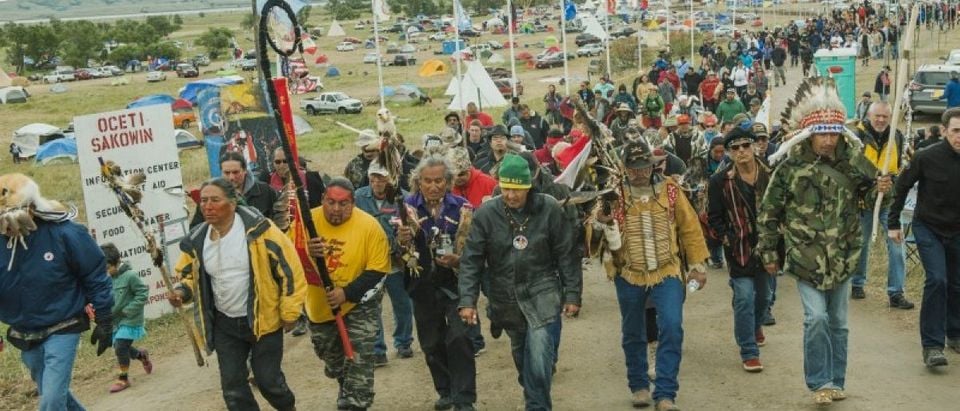American Indians are occupying huge plots of private land near the Dakota Access Pipeline, claiming they own the property based on a nearly 165-year-old treaty.
The company building the nearly 1,200 mile-long oil pipeline has purchased large tracts of land, relying on eminent domain to construct routes four states from North Dakota, to Iowa, to Illinois. It was not known who owns the occupied land.
Protesters associated with the anti-oil protest told reporters Monday that the land is theirs under the Fort Laramie Treaty of 1851. Tribes have challenged the treaty and others like it in court for not being honored.
“We have never ceded this land. If Dakota Access Pipeline can go through and claim eminent domain on landowners and Native peoples on their own land, then we as sovereign nations can then declare eminent domain on our own aboriginal homeland,” Joye Braun, spokeswoman for the Indigenous Environmental Network, said in a press statement.
Demonstrations began in earnest when members of the Standing Rock Sioux, whose ancestors are the Great Sioux Nation, argued the pipeline would trample on venerated tribal lands and destroy artifacts. They also believe it could potentially poison waterways, including rivers such as the Missouri River and Lake Oahe. The pipeline will travel 90 feet below the riverbed.
The project is a joint venture between energy companies Marathon Petroleum Corp. and Enbridge Energy Partners LP and Energy Transfer Partners.
Federal officials are not evicting protesters hunkered down at an encampment near the highly controversial Dakota Access Oil pipeline. They believe booting the protesters would harm free speech rights, despite the fact that the land is owned by the U.S. Army Corps of Engineers.
“The best way to resolve this is to reroute this pipeline and for the (Obama) administration to not give an easement to build it near our sacred land,” Archambault said in an interview.
President Barack Obama shelved the pipeline in September until the government could determine the effects it will have on the environment. The decision to temporarily stop the pipeline was likely informed by the stiff opposition to the project.
The Department of Justice and the Department of the Interior announced the pause in an area near the North Dakota’s Lake Oahe, a major water resource for the state’s Standing Rock Sioux Tribe.
Liberal activists and politicians’ decision to hold back criticism of the tribe’s occupation is unusual given the amount of publicity and criticisms they hurled at another group of land rights activists in Oregon.
Militia members led by Ammon Bundy occupied the Malheur National Wildlife Refuge in eastern Oregon for nearly a month earlier this year. Bundy and his cohorts claimed at the time that the occupation was meant to protest the federal ownership of land they believed belong to a local community.
Kieran Suckling, the executive director of the Center for Biological Diversity, lobbed invectives at the occupiers in January despite having been found guilty of criminal trespassing for occupying private property and refusing to leave as part of a political protest.
Follow Chris on Facebook and Twitter
All content created by the Daily Caller News Foundation, an independent and nonpartisan newswire service, is available without charge to any legitimate news publisher that can provide a large audience. All republished articles must include our logo, our reporter’s byline and their DCNF affiliation. For any questions about our guidelines or partnering with us, please contact licensing@dailycallernewsfoundation.org.



